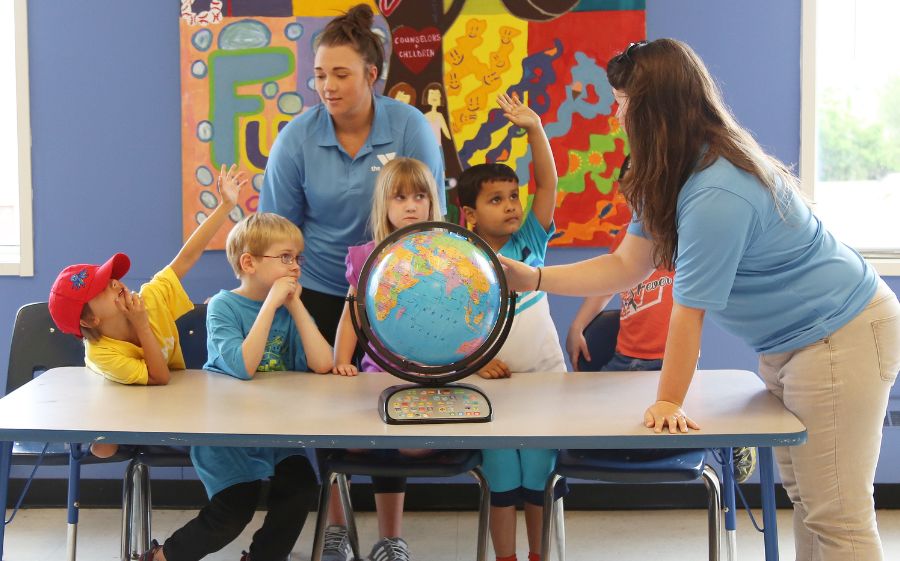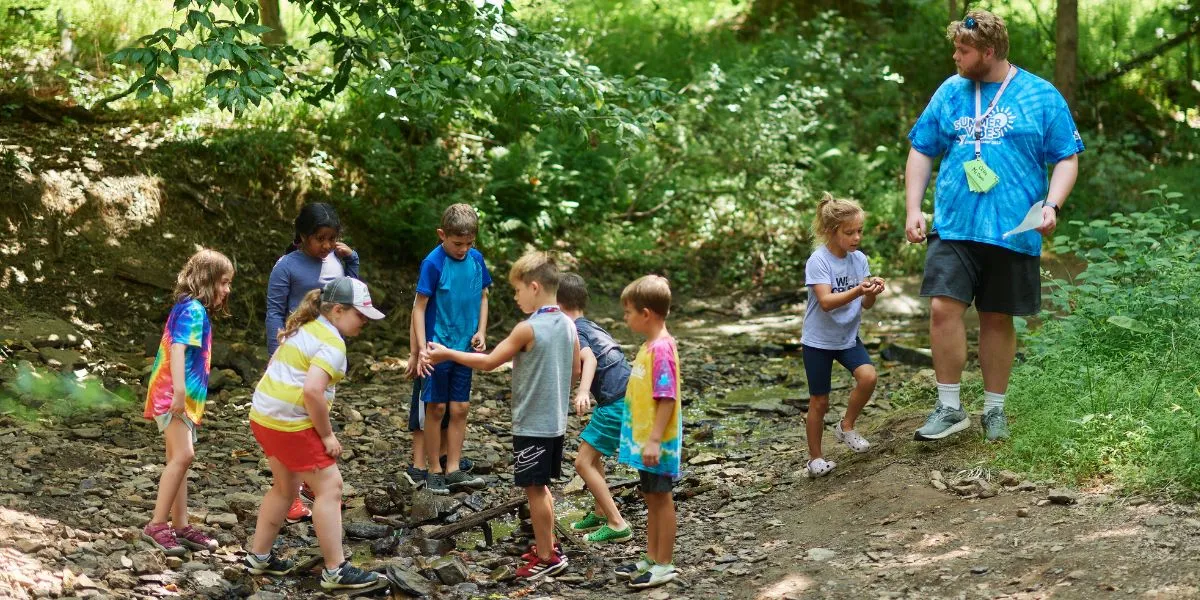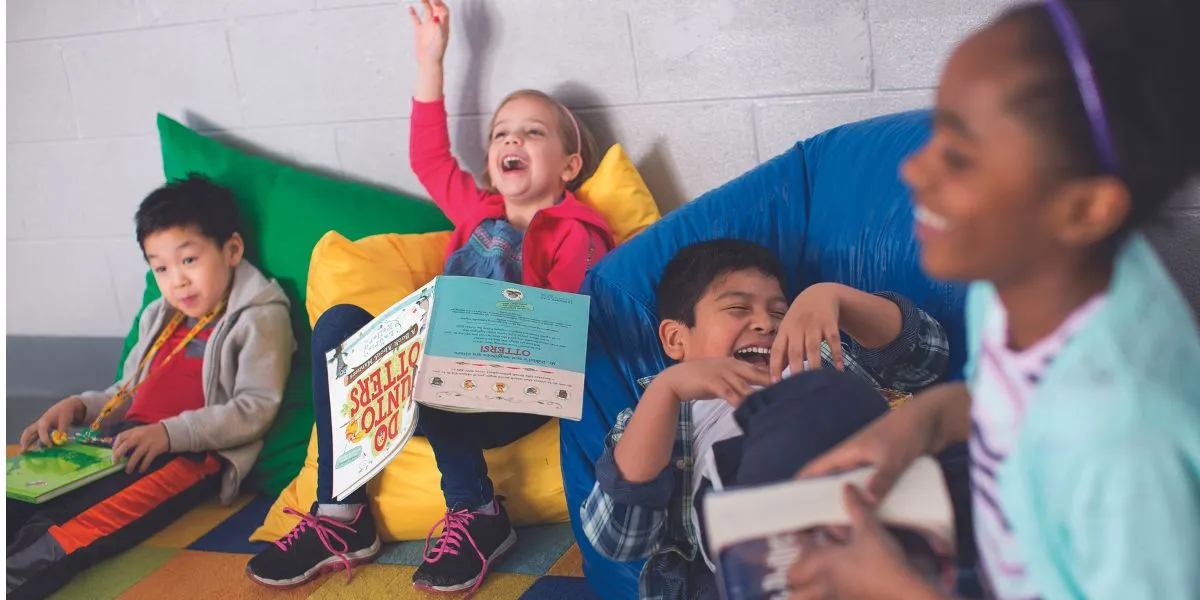
Published: 07/05/2024 - 8:00 AM
The Importance of a Stimulating Environment for Children’s Development
A child's environment is a big factor in development. During the early years of their lives, children learn in unique ways — through exploring, experimenting and interacting with their surroundings. The world around them shapes their experiences, influencing their physical, emotional, social and intellectual development.
As a parent or guardian, understanding the importance of a stimulating environment for children's development is key to providing safe spaces supporting growth, learning and exploration.
What Is a Stimulating Environment?
Stimulating environments are dedicated spaces that promote play, learning, relaxation and investigation. These safe spaces, filled with age-appropriate objects, encourage children to engage and use their imagination and talents. While you can create a stimulating environment in your home, open spaces offer better opportunities for more engaging activities.
The outdoor environment allows children to move, play and experiment with motor skills. They can explore, discover and connect with nature in their own way, which helps them develop an independent understanding of the world around them. Since the outdoors contains natural elements like green spaces, it offers endless, play-based resources that support a child's learning and development.
How Environmental Factors Impact Healthy Child Development
In their early years, children don't have habits or experiences, so they draw their understanding from their surroundings. As a parent, you want to ensure your child is exposed to a positive and enabling environment for healthy development. Here's a breakdown of how environmental factors impact healthy development in children:
Physical
An environment's physical factors can influence a child's development. These include a safe and loving home and access to a secure neighborhood with open spaces that allow play and exploration without putting the child at risk. These factors make resources available that encourage children to work and strengthen their bodies through vigorous activities, which promotes physical and mental health. A positive physical environment challenges children through obstacles, pushing them to identify and solve problems and promoting intellectual development.
Emotional
A child's development is also shaped by the emotional and psychological effects of their environment. They need a supportive, nurturing and enabling atmosphere to help maintain emotional well-being. Children raised in environments that display positive energy and show them compassion, love, care and understanding will develop stronger emotional resilience. The opposite happens when children grow up in high-stress environments.
Educational
Environments that encourage education and learning are important in children's intellectual development. When parents introduce children to elements of learning in the early years by exposing them to storybooks and other educational materials, they nurture the children's ability to learn, solve problems and develop critical thinking.
Children need an environment that promotes early childhood education. That could be a learning program for toddlers or a supplemental program for school-aged kids. Providing kids with a happy, safe, and supportive learning environment stimulates their academic curiosity.
Social
Children learn social interactions through what they experience. An environment that facilitates positive social interactions shapes a child's social skills, cultivating values like empathy, compassion, generosity, communication and teamwork. Encourage social learning through interactive play with friends and teach your child to share so everyone can have a good experience. Parents can ensure that their kids are growing up in surroundings that support social development by organizing play dates or enrolling them in childcare programs.
How to Create Stimulating Environments for Children
A stimulating environment offers children the resources and positive experiences needed to learn, explore, discover and overcome challenges based on their needs and interests. It creates opportunities for independent learning and encourages kids to master their talents. These tips will help you create a stimulating environment for your child:
Organize Materials
Creating a space that stimulates your child requires some arrangement based on age. For instance, you could collect containers and fill them with safe items like large blocks that they can't fit into their mouth. For an older child, organize the space to be more detailed and challenging, with various materials like toys, books, boxes and bins to allow your child to pick and interact with objects they are interested in.
When organizing the play area, make objects accessible, especially to younger kids who struggle to reach certain items. Safe and accessible items allow your child to think and play independently. Remember to change out different elements of the play environment, like colors and toys, to create new experiences.
Arrange for Adult Supervision
Kids learn through different sources. While they thrive on their own in child-led play settings, they also need adult-led activities. As the caregiver, you provide an important layer of learning by creating inviting and challenging play spaces and supervising the activities. Adults need to be present and emotionally available in these settings to support and interact with the children.
Signing your child up for early learning care is an excellent way to expose them to professional adult supervision. Experts in child care services have the resources and experience required to nurture the foundation children need.
Create Open Spaces
Open spaces, especially those with green features such as parks, lawns and playgrounds, have a major impact on children's development. These spaces provide well-rounded learning opportunities as children explore and interact with their surroundings. An open space can be a room at home that has no obstructions, a classroom or an outdoor area. These spaces allow kids to roam freely, choosing how they want to play.
Nature is generally more immersive and stimulating, but you can also create an indoor, open floor area with colorful elements, play materials and interesting artwork to create a stimulating atmosphere.
Encourage Exploration
When children have time for independent learning, they experiment, explore and discover things by themselves. They learn to weigh their options and take risks. Nurture their ability to explore and discover by providing hands-on activities with elements like puzzles and obstacles. Introduce various materials and alternatives into their space, such as different-colored items and designs, to encourage imagination.
You could also label items to help your child identify items they use in different projects and categorize their activities.
Foster Your Child’s Growth With a Stimulating Environment
Young children need access to resources and stimulating environments that offer safety, comfort, entertainment and engagement. These settings allow children to choose their own learning experiences and develop social skills through play. As a parent, you can support your child's early development by providing a positive and interactive atmosphere.
Parents also need support to ensure their kids have access to a stimulating environment that promotes well-rounded growth. The YMCA offers a holistic environment for child development. Explore our child care programs, designed to provide unique learning and play experiences that support your child's growth.

